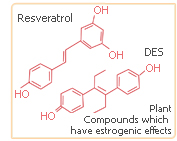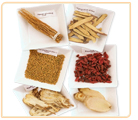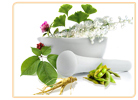What is a Phytoestrogen
The human body is incredibly fragile and the smallest fluctuation in chemical or hormone levels can have a dramatic effect on a persons� health. Although there are a range of different treatments for hormone-based problems, plant hormones such as phytoestrogens are becoming increasingly popular as a natural alternative to human-engineered drugs. Keep reading to learn more about phytoestrogens and how they work.
What are Phytoestrogens?
 A phytoestrogen is a plant which produces estrogen-like compounds similar to those in the human body. When such compounds enter the body, they act as a substitute for human estrogen and help balance hormone levels. Phytoestrogen compounds can benefit people with low estrogen levels and who are experiencing health problems because of this. A phytoestrogen is a plant which produces estrogen-like compounds similar to those in the human body. When such compounds enter the body, they act as a substitute for human estrogen and help balance hormone levels. Phytoestrogen compounds can benefit people with low estrogen levels and who are experiencing health problems because of this.
Phytoestrogen compounds were first discovered in plants as early as 1926 but it too some time for scientists to realize the impact phytoestrogenic compounds could have on human or animal metabolism. In the 1940s it was discovered that sheep grazing on red clover (a phytoestrogen-rich herb) pastures had increased fertility compared to those grazing elsewhere. Keep reading below to discover the main sources of phytoestrogens.
Phytoestrogen Sources
 There are several natural sources of phytoestrogens and many supplements and herbal remedies have been created from these so that consumers can make the most of their beneficial properties. There are several natural sources of phytoestrogens and many supplements and herbal remedies have been created from these so that consumers can make the most of their beneficial properties.
Phytoestrogens can be found in many foods that the average person consumes on a daily basis. Grains, beans, nuts, seeds, seed oils, berries, fruits, vegetables, and roots all contain phytoestrogens although many of them do not contain high enough levels to impact on the human body.
Class
Isoflavones
Flavanols
Flavones
Flavanones
Lignans
Sources
Soy beans, tempeh, tofu, soy milk. Soy sauce is not a significant source of isoflavones and is high in sodium.
Onions, lettuce, tomatoes, red wine, green tea
Apples, green tea
Citrus peels
Flaxseed or flax flour, lentils, small amounts in garlic, squash, asparagus
f a person requires a stronger dose of plant estrogen then some of the best sources of natural phytoestrogen are found in herbs. Examples include:

. Red Clover
. Black Cohosh
. Soy
. Ginkgo Biloba
. Dong Quai
Now that phytoestrogens have been explained. Click this link to continue reading the next section about phytoestrogen herbs.
Conclusions
Although natural phytoestrogens have health benefits, the sources of phytoestrogens can also produce side effects which may deter consumers from buying phytoestrogen-laden products. However, there are alternatives to phytoestrogens and the least dangerous of these are non-estrogenic compounds. To learn more about alternatives, such as non estrogenic herbs read the article below.
Which herb should women try? Today women are looking for relief from their menopause symptoms with herbs. Phytoestrogenic herbs and non-estrogenic herbs are good in relieving menopause symptoms, but recent studies show that non-estrogenic herbs have no side effects because they help the body to produce its own hormones instead of introducing hormones like the phytoestrogenic ones. Learn more about non-estrogenic herbs for menopause.
| 

